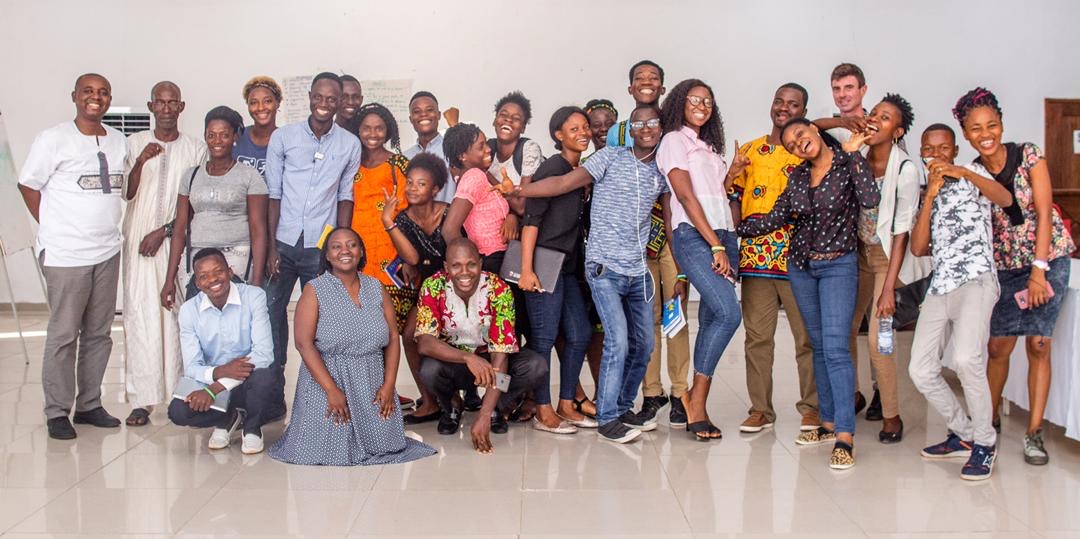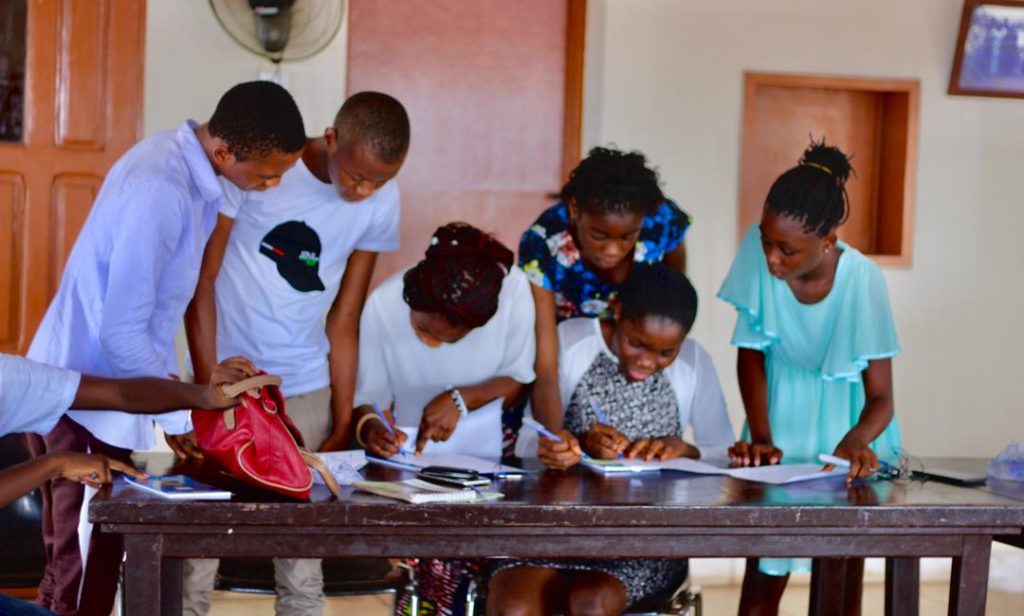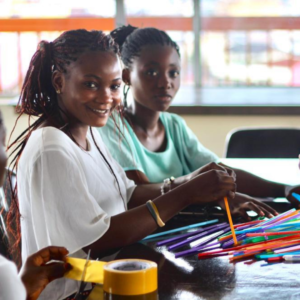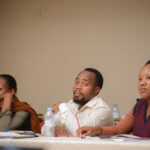Fund program director John Kabia explains how funders can use participatory grantmaking to deepen their engagement with the communities they serve.

Through its grantmaking, the Fund provides flexible support that allows local groups to develop and implement their own agendas. But one of the most promising new trends in philanthropy is participatory grantmaking—empowering affected communities to decide who and what gets funded.
In this Q&A, Children’s and Youth Rights Program Director John Kabia, who recently finished a successful participatory initiative with children and youth in Sierra Leone, explains what participatory grantmaking is, its benefits and challenges, and how funders can use it to deepen their engagement with the communities they serve.
What is participatory grantmaking?
Participatory grantmaking is the practice of ceding grantmaking power to affected community members and constituencies. In practice, it means placing affected communities at the center of grantmaking by giving them the power to decide who and what to fund. This form of grantmaking requires both a recognition of the unequal power relationships inherent in philanthropy as well as a conscious effort to rebalance that power.
How does it work?
There are different models of participatory grantmaking with slight variations in how they work and their levels of responsibility and autonomy. But each model involves:
- Setting up a panel of representatives from the affected community
- Defining the grantmaking criteria
- Putting out a call for proposals
- Convening the panel to discuss and award grants
Most models also include a responsive training element to ensure panel and community members have the necessary information and skills needed to make informed decisions. But such training should be careful not to reproduce the traditional top-down grantmaking process. Instead, we want it to be based on community needs identified by the panel members. Increasingly, many participatory grantmaking models are going beyond the awarding of grants to involve panel and community members in a participatory process of monitoring, evaluation, and learning.
Who does it benefit?
Participatory grantmaking particularly benefits affected communities, by ensuring they have a direct say in deciding how philanthropy resources are used. But it benefits funders as well. This form of grantmaking allows us to learn from and better align our grant-making with the needs and aspirations of local communities and constituencies. It also helps us reach new groups that would otherwise have been off our radar.
What kinds of challenges does participatory grantmaking present?
Participatory grantmaking is not without its challenges. For a start, it can be time consuming for both staff and volunteer participatory panel members. It is costly due to the logistics involved in setting up and bringing people together. In addition, there is the risk that a conflict of interest among panel members could undermine the integrity of the process. And the implied competition for limited resources that the process entails, if not addressed thoughtfully, could undermine the cohesion of a movement.
Beyond those day-to-day challenges, participatory grantmaking also raises the question of sustainability: how can we go beyond one-off grants and build an ecosystem of grantmakers willing to provide flexible and long-term support for the work of grassroots organizations?
Despite these challenges, the advantages of involving affected communities in grantmaking far outweigh any obstacles. It brings to the table voices and perspectives that are too often ignored in the decision-making process. As funders, we must acknowledge, confront, and embrace the realities, uncertainties, challenges, and opportunities that come with participatory grantmaking with a view to rebalancing and sharing of power with affected communities and constituencies.
How does it encourage diversity, equity, and inclusion?
The desire to make philanthropy more diverse, equitable, and inclusive is at the very heart of participatory grantmaking. By involving affected communities, participatory grantmaking seeks to confront and upend a long-standing criticism of philanthropy—that it is elitist, undemocratic, and neocolonial.
For participatory grantmaking to succeed, however, foundations must purposefully adopt a targeted and intentional approach to achieve diversity, equity, and inclusion. In practice, this means ensuring the processes for selecting panel members and inviting applications are open, inclusive, and accessible, and conscious efforts are taken to eliminate or reduce barriers to participation of minority or marginalized sections of communities.
What do participants get from being part of the process?
Participatory grantmaking allows affected communities to have a direct say in interventions that affect them.
For those serving on the panels, they are able to bring their lived experiences into the grantmaking process. It also allows them to be active participants in deciding which issues to prioritize and what approaches and groups are best suited to address them.
For grant recipients, being supported and acknowledged by their peers offers a real validation of their approach.

How do you measure success?
Learning and assessment is an important element of any grantmaking process. With participatory grantmaking, it is especially critical to note that the process is as important as the outcome.
Creating spaces for ongoing learning and engagement throughout the grant-making process and beyond is essential. As mentioned above, participatory grantmaking should go beyond deciding how grant money is allocated. Local communities and panel members should also play a role in defining what success looks like and be involved in measuring that process.
What role does the Fund play?
While participatory grantmaking can promote an open and participatory process, critics question the claim that it “shifts power” to affected communities because foundation staff and boards are often involved in setting the initial parameters and scope of the process. This requires us to acknowledge the power—including our knowledge of and deep experience in grantmaking—we bring into the process and seek actively to rebalance and share such power.
As part of the Fund’s first foray into participatory grantmaking, we worked with a local organization, panelists, and grantees to identify and support training and learning opportunities for participants in the process. The Fund also developed an internal learning and assessment process, alongside commissioning an external evaluation of the initiative.
By sharing the learning and insights from this pilot and the work of grantees with peers and allies, we hope to not only increase their visibility and reach but also to encourage other funders to invest in similar initiatives.
Sign up to our newsletter
Add some impact to your inbox.
By submitting this form, you accept that your data will be stored and processed in line with our Privacy Policy.



